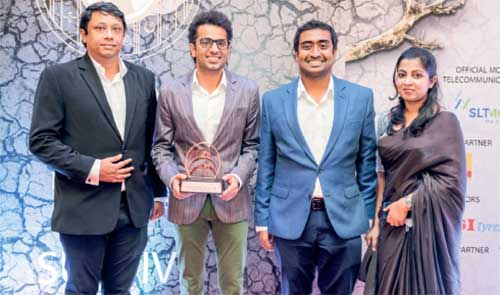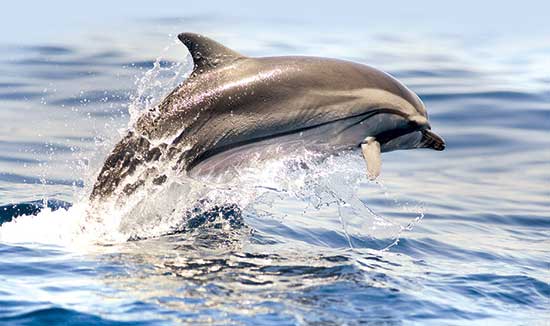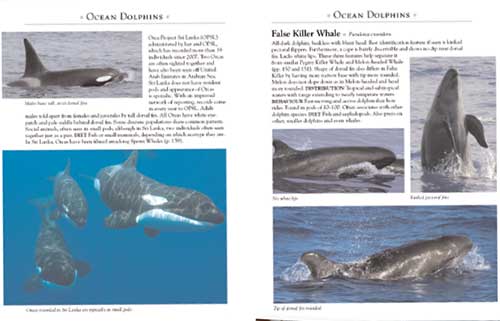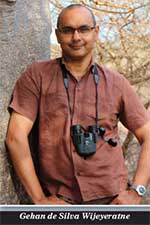Life style
‘Pride and ego’ cannot enter birth place of Jesus

Holy Land Tour (Palestine and Israel)
by Lalin Fernando
We were a group of 48 that visited the Holy Land (Palestine and Israel) in mid- September 2018. Guided by Bishop of Galle Dr. Raymond Wickremasinghe the group, now sadly 47 as one died on the tour, came back bonded by an experience of a lifetime with a spiritual predisposition. This was in the land of the three Aramaic religions with over 5,000 years of history dating back to Greek, Roman, Persian, Byzantine, Islamic; Crusader, Turkish and British mandate times. Much of it was violent, bloody but more was epochal and inspiring in an exceptional Mediterranean land.
We arrived in Amman, Jordan from Abu Dhabi on a Monday morning. The Israeli border crossing check point palaver which apparently could at times be a six hours ordeal, took us only about 45 minutes. This was most probably due to our tour manager Ms. Thusahari’s tremendous experience (over 20 tours), confidence and efficiency and of course the Bishop’s personality.
Crossing over to the Israeli side we had what was to be a trade mark warm greeting from Sonia, who some thought at first was one of our tour party. An Arab Christian born in Nazareth in Northern Israel, she was our very able guide. With a never failing sense of humour and politeness she kept us closely engaged. At the churches she made sure she was heard above other guides briefing their groups, while Bishop Raymond would translate into Sinhala and elaborate if necessary. Her briefings were delivered in precise and clear English. She asked us to note that much of the land was below sea level, a novel experience.
 Our coach driver was gentleman Jameel. On our return to Jordan, it was ebullient Hussein who we were told was not from the Royal family! Both were excellent drivers especially when negotiating the spectacular mountain roads.
Our coach driver was gentleman Jameel. On our return to Jordan, it was ebullient Hussein who we were told was not from the Royal family! Both were excellent drivers especially when negotiating the spectacular mountain roads.
This is a fascinating land divided unequally and by force between Jews and Arabs. The UN in 1994 ordered Israel (Resolution 142) to hand back Arab land taken by conquest in 1967.This has not happened. Instead the Arabs were given certain areas designated as Palestinian Authority A and B. One, like Bethlehem, is policed by Arabs and the others like Gaza by Israelis. Provisions for the status quo of the holy places in Palestine are governed by the Treaty of Berlin (1878), so fortunately Israel is bound by it too. While there are parts that look like any first world country, some others saddened us.
We crossed over the Allenby (General, later Field Marshal) Bridge. It was Allenby, called ‘Bull,’ that led the British Army into Palestine during WW1 with the help of Colonel TE Lawrence’s Arab Forces. They had defeated the Ottoman Turks who had ruled most of Arabia for 400 years (1517-1918).The Arabs however were betrayed by the Brit ‘Bloody Balfour’.
We had a tasteless lunch in a restaurant overlooking the northern end of the Dead Sea that is about 300 feet below sea level. As we proceeded inland the scenery was breathtaking. Soaring mountains, bare of trees and greenery were interspersed with deep valleys in this part of the Levant (Cyprus, Jordan, Israel, Palestine, Lebanon and Syria). Later on we were amazed to see Israeli plantations with mangoes the size of coconuts and four ft tall coconut trees despite geography and rock hard soil. However due to overuse of scarce ground water, the Sea of Galilee which is the main source for Israel’s water, is drying up rapidly.
We saw armed soldiers in many places reminding us sadly of SL pre-May 2009. It excited some who photographed them despite warning notices not to do so. These were clearly young reservists of the crack Israeli Forces. They looked scruffy and bored.
We arrived in the late evening Monday at the impressive four-star Orient Palace Hotel, Al Sahel St, Bethlehem in Palestine. It is pronounced Bethlaham from Bait (House) laham (lamb). Apparently a butcher ran a mutton shop there centuries ago. We showered and struck out for the small shops close by. Our favourite was the Hezar sweet shop run by Issa and his son. We made friends and quickly struck bargains for an assortment of exotic nuts and Arabic and Turkish sweets. US dollars were the preferred currency. Nobody wanted Palestinian dinars!
Our wake up calls were at 5 am on the first three days after arriving, 4 am on one day and 3 am on the Nazareth (longest day) visit. This was necessary in order to be at the religious sites before hundreds of other tourists swarm in. The churches are open even at 5 am. Late arrival could result in considerable delay in entering the churches. As SL is two and a half hours ahead of their time, getting up early wasn’t much of a hassle from our normal waking up times.
The weather was glorious with clear blue skies, if also hot. It was ideal for the climbing and walking that we had to do daily. We drank a lot of water having been warned of heat stroke.
We set off each morning with inspirational Catholic piety, the Bishop leading in prayers and the singing of hymns. (The group had about three Anglicans and one Buddhist too) His Lordship was stern occasionally to make sure we did not waver in focus and purpose. We ended each day with Mass at the last church visited.
The churches made up in atmosphere, character and awe what they may have lacked in Western grandeur. The mosaics, stained glass windows with limestone or marble floors and columns were there but in dark, ‘moody, broody’ churches, lit with an assortment of brightly coloured lamps. Some were in humble stone buildings but they attracted pilgrims from all corners of the world in their thousands throughout the year. The Chinese were the most numerous from Asia.
On Tuesday we visited The Basilica of the Nativity, the birth place of Jesus. One enters it through the 4-foot by 2-foot Door of Humility. It is to make sure that by ‘pride and ego’ cannot enter. It was first built in the fourth century by Queen Helena, mother of the first Christian Roman ruler, Constantine. Burned down in a fire, it was rebuilt by Byzantine Emperor Justinian in the sixh century.
A 14 point silver star marked the place where Jesus was born. This was removed, probably by the Greeks in 1847, but was later replaced in 1853 by order of the ruling Ottoman Turks. It was a bit underwhelming as it was in urgent need of repairs, said to cost US$ 17 million. The Palestinian Authority (98% Muslim) and many countries including Jordan have contributed.
When the Persians invaded in 614 AD and torched almost all the churches, they spared this church as they believed the mosaics there depicted three women in Persian dress. Co-located is the Church of St Catherine where Christmas midnight Holy Mass is celebrated with teeming crowds.
We followed the Pilgrims route that included Shepherd’s Field, Manger Square and the Milk Grotto where Mary hid the infant Jesus from the Roman soldiers before her flight to Egypt. Apparently the white rock nearby indicates drops of milk.
We visited Mount Zion the site of the Last Supper Room, below which is King David’s tomb. The one mile ridge of the Mount of Olives that used to be covered with olive trees has a breathtaking view of Jerusalem with the Dome of the Rock covered in gold leaf, dazzling. The Garden of Gethsemane where some of the olive trees are over 900 years old lies at the bottom of the ridge in the Kidron Valley
The Basilica of Agony (Church of All Nations) is by Gethsemane. It is built over the rock on which Jesus spent the night in prayer before his betrayal by Judas and crucifixion. Its interior is purposely dark and the ceiling, painted dark blue, evoking the night time of agony.
We also visited Emmaus Abu Ghosh, seven miles from Jerusalem where Jesus appeared before his two disciples after his death and resurrection and had a meal. We saw the Church of St Peter in Galllicantu where the cock crowed for the third time as Peter thrice denied Jesus. The dungeon where Jesus was humiliated, assaulted and imprisoned by the Jewish High Priest Caiphas before he was tried is under the church. We also went to the Dormition Abbey on Mt Zion where Virgin Mary’s statue lies in peaceful slumber.
In the gorgeous hillside neighbourhood on the road to Jericho was the Franciscan Basilica of Visitation in Ein Karem, commemorating the visit of Mary to her cousin Elizabeth. This is where Mary sang her hymn of praise, the Magnificat (Latin-‘My Soul’). It is inscribed on its walls in 62 languages. It was banned in three countries as being revolutionary!
We saw the Golden Gate that is permanently closed but through which it is believed by all three religions that the Messiah will enter in latter days, the Chapel of Ascension (the caretakers are two Muslims), Pater Noster the church of the Lord’s Prayer (now in 140 languages), Pool of Bethesda where Christ cured a man who was crippled (with a noisy Indian tour party disturbing everyone). What is said to be the print of the right foot of Jesus can be seen at the Chapel of Ascension.
The left foot print is in the Al Aqsa shrine, apparently not a mosque, which is where the Muslims believe Mohamed made his Night Journey to Heaven, having arrived from Mecca.
On Wednesday we visited beguiling, bewildering and wonderful Jerusalem. There was over-excitement in presence of history, beauty and belief. Yet it is a city under tension as a 400 mile long 84 foot high wall cruelly encircles the West Bank Palestinians. Jerusalem’s name came from the Hebrew ‘Yerushalayim’ meaning the City of Peace.
We entered the walled Holy city after the Church of St Anne, dedicated to the mother of Virgin Mary, via St Stephen’s gate (Lion’s Gate).This is where the first Christian martyr was stoned to death. We walked on the Via Dolorosa (The Way of Sorrows – Way of the Cross) to the Church of the Holy Sepulcher (Calvary). The Jews (who else?) believe the route was different. The tour party, three at a time, took turns to carry the Cross (brought disassembled from SL) from station to station.
Sadly, the death of 80year old Mrs. Violet Perera due to a heart attack occurred in front of the Church just before noon. She had carried the cross twice. Her sister was present. The Bishop joined the paramedics in desperate resuscitation efforts. He and tour manager Thushari completed all formalities with the Israeli police including contacting the next-of-kin of the deceased in Negombo, all within two hours. Regrettably the SL Embassy did not take the many calls from the Israeli police during those two hours. They Embassy denied receiving any calls!
A pall of grief descended. The Bishop sensing despondency immediately revived everyone by reminding them that as we mourn for the dear departed lady, we should not let grief overcome purpose in the Holy Land.
The Church is the most venerated site in Christendom. It has very many chapels of all denominations. Four, some say five Stations of the Cross are within it. There is the lavishly decorated site of the crucifixion, Calvary (Golgotha), the Stone of Anointing and the (empty) tomb where Christ was buried, the traditional site of Resurrection of Christ at the Greek chapel of Anastatis, that has an altar over the rock of Calvary (12th station), the Catholic chapel of Nailing on the Cross (11th station). Underneath the Golgotha chapel is the statue of Mary (13th station).
The Church with a capacity of 8,000 opens at 4 am. About 15,000 visit daily. The Orthodox Greek start Mass, (2 am) followed by the Armenians and then the Catholics at 6 am. There is also a Copt who has to pray alone while Ethiopians do so from their roof top monastery. Priestly brawls over territory occur several times a year.This is despite the ‘firman’ (decree) by the Ottoman rulers in 1852, confirmed by the Treaty of Paris (1856) that binds the various denominations. Roof repairs and even shadows cause problems!
Questions were asked about the Arc of the Covenant where the Word of God, the Ten Commandments, in stone inscriptions inside a box apparently lies buried somewhere in the Temple Mount according to the Jews. Rumours are many and hoaxes a few but the Bishop reminded us not to worry about it as the Covenant is in the hearts of believers. The Jews however are digging for it close to Al Aqsa shrine, posing a problem to its foundation. They believe Al Aqsa was built over King David’s burial site. They insist a discovery of the Dead Sea scrolls proves where the location is and it would finally prove that Jerusalem belongs only to the Jews. When Israeli General Moshe Dayan’s troops swept into Jerusalem after defeating the Jordanians in 1967, he prohibited attempts to raze Al Aqsa shrine.
The Church was lost to the Christians for 700 years. Saladin, a Kurd from Tikrit (Saddham Hussein’s birth place) who conquered Jerusalem from the Crusaders (1198) gave the 30 cm long keys to it to two Muslims whose direct descendants Aded al Judeh (aged 89) and Nusseibeh (69-years) are the Custodians today. They open it at 4 am daily. They hold the ‘newer’ key that is 500-years old. They have the original that is 800 years old too! There is even an unused ladder in place from 1728 on the first floor.
We also visited the Western wall that is the foundation of the Temple Mount, the holiest place in the Jewish faith where King Solomon built their sacred temple. It came under Jewish control in 1967 after about 1,000 years. The Jews do not call it the ‘Wailing Wall’, a term coined by Westerners.
Jerusalem is also Islam’s third holy city.The Al Aqsa mosque on the Temple Mount is the third holiest Islamic site. It is where at one time Muslims turned in its direction to worship. It was to Mecca later. It is out of bounds to non Muslims. The Dome of the Rock is also there.
Coming down hill from the last church for the evening, we stopped at a place where everyone quenched their thirst with juice from massive pomegranates. An Israeli who had found out we were a happy talkative crowd from Sri Lanka said he had been an Air Force officer who had been in SL to fix guns on helicopters in 1988. He said he had an SLAF corporal as driver. This Corporal apparently pointed out Tamils on the streets as he drove in and out of Colombo. He said he too could always recognize an Arab anywhere, snidely suggesting we had something in common. I told him I was 78-years old but had never been able or wanted to look for racial or other differences between the Tamils and Sinhalese.
We had a 5 am start on Fri 14th to go to Nazareth, Jesus’ home town and the Arab ‘Hi Tech capital’ of Israel. It has 70% Muslims and 30% Christians. It nestles on a craggy hillside with tall trees. Its layout reminded one of Nuwara Eliya, where in fact there is a ‘Nazareth’ hotel.
We visited the Church of Annunciation where Angel Gabriel appeared before Mary, and told her she would give birth to a child, Cana, where water was turned into wine, the Church of St Joseph where Joseph had his carpentry workshop, Mount of Beatitudes (Eight Blessings) that is the site of the Sermon on the Mount, with its arches of marble and alabaster, Church of Multiplication, Church of Primacy of St Peter and the Franciscan Wedding Church at Kfar Kanna. Here married couples were overjoyed to be able to repeat their vows. Cana wine was bought by all with the promise of Christmas looming. Unfermented, it is sweet grape juice. Both are tempting.
We then descended to the Sea of Galilee (Tiberias) where it is said Jesus walked across its waters. The shore line was luxuriant with tall trees. Inland is the wateless plain of Hattin where the Arabs in 1187 under Saladin defeated the Crusaders under King Guy de Lusignan in one of the most decisive battles of history.
We each had an enormous Galilee Talapilla fish with rice and vegetables in a restaurant overlooking this fabled fresh water lake (sea). Our Hostess said the meal was specially prepared for us and asked if she could sing for us too. She did so sweetly. When she finished we persuaded Michelle who had sung in a Jerusalem church two days previously too, to respond. She obliged with a stunning and electric rendering of ‘O Jerusalem’. The hostess like the other over 100 guests, clearly inspired, sang once more.
We then had a boat ride on the Galilee. The crew at once ran up the Sri Lanka flag and played cassettes of Sinhalese songs as we motored in the emerald green waters overlooked by the Golan Heights with Mt Hermon, dominating and often snow capped, as we looked at the hills of Lebanon, Syria and Jordan
On the way back at Jericho we also saw the Sycamore tree that Zachariah, the short pitiless tax collector for the Jewish rulers, climbed to view Jesus. Overwhelmed at being recognized by Jesus, he reformed himself.
We had a 7am start on Saturday. Most of us wallowed in the turquoise waters of the Dead Sea that is 427m below sea level, the lowest point in the world. It is 35% salt. It keeps one completely buoyant, an unforgettable experience. It also has the lowest bar in the world!
We went to Jericho (Arab territory) and by cable car to the Mount of Temptation (Qurantico) 350m above sea level to have lunch in a restaurant carved into the rock. Qurantico is where Jesus defeated the temptation of the Devil for 40 days and 40 nights. The word ‘quarantine’ so familiar to us now, is derived from it. There is a Greek monastery up there too.
Jericho is said to be the oldest city in the world at 10,000 years. One mosque Omar is 258m (846 ft) below sea level. Just one percent of just one percent of its population is Christian. There is no proof that Jericho fort’s very old walls fell to Joshua’s legendary trumpet calls.
While waiting for the cable car for the return ride, a Palestinian policeman told us how very difficult Israel makes it for Arabs to get a passport or visit another country. Evil.
After lunch we went to Bethany near Al Maghtas where John the Baptist baptized Jesus in the Jordan River. The very pretty Arab and friendly Israeli girl soldiers caused a diversion- mainly for the ladies – who outnumbered the men in our group! The Israeli’s (who else?) say the actual baptismal place is further north under their control where hotels and guest houses reap the benefits. The river is just a muddy stream here. Its middle, marked by floats, marks the border between Jordan and Israel. The Bishop conducted the baptism ritual for those who wanted it. Jordanian soldiers like the Israelis were seen helping visitors. There is a Jewish ritual bathing too called the mikvah. The Arabs call it ‘immersion’.
As we were leaving an Israeli lady asked us where we were from. Having been told she said she was very happy to see people from SL and hoped that we enjoyed our visit there.
A final mass was in held in Bethlehem This time it was a Palestinian lady who having asked where we were from, thanked us for coming to Bethlehem. Tourism is the life blood of the Arabs in Palestine. There are over 600 hotels in Bethlehem.
All our lunches were at prearranged restaurants but the best was one we chose. At one, after lunch, its management distributed fez hats and organized a crocodile dance with rollicking Arab music. The best dancer cannot be named!
Every night at dinner in the shared Arab and Jewish tradition there were vegetables in plenty with various meats and kebabs and an abundance of fruit. Bishop Raymond unobtrusively sat at a different table every day, getting to know everyone in the group.
On the last night there was a delightful Arab pre-wedding women only party. There was music and dancing. They were all incredibly pretty with peaches and cream complexions and fashionably dressed.
At a short farewell ceremony, Sonia and Jameel were thanked profusely by the group as were the Bishop and Thushari. Individual donations were then given to Sonia and Jameel who became a bit emotional.
We left at 9.30 am on Saturday for our return to Jordan by coach. We were taken up to the heights of Mt. Nebo in Madaba where Moses, after 40 years of wandering to get to the Promised Land, died without being able to do so. He was a prophet of the Jews, Christians and Bhais. We saw the church that is built over his resting place. We had a stunning view of Palestine, the river Jordan and the Dead Sea as we climbed into the mountains.
We returned to SL on Monday with fond memories of a never-to-be-forgotten experience in splendid company. It had been a wonderful, delightful and charming few days. Not only Jews say ‘Next year in Jerusalem’.
- News Advertiesment
See Kapruka’s top selling online shopping categories such as Toys, Grocery, Flowers, Birthday Cakes, Fruits, Chocolates, Clothing and Electronics. Also see Kapruka’s unique online services such as Money Remittence,News, Courier/Delivery, Food Delivery and over 700 top brands. Also get products from Amazon & Ebay via Kapruka Gloabal Shop into Sri Lanka.
Life style
LUXASIA aims to lead luxury beauty’s growth in Sri Lanka

Sri Lanka is a land renown for stunning natural beauty. Yet, LUXASIA still managed to usher in a different kind of beautiful to the market through its expertise in luxury beauty retail and omni-distribution.
In November 2019, LUXASIA unveiled its inaugural classy beauty counters at Odel, One Galle Face. Since then, it has brought enchanting fragrances from luxury brands such as Burberry, Calvin Klein, Gucci, and Marc Jacobs, as well as trendy skincare from KORA Organics to beauty-lovers in an exquisite and captivating retail format.
Now, having successfully overcome the challenges in 2020 imposed by COVID-19 and related lockdowns, LUXASIA is ready and excited to thrill Sri Lankan consumers again. This time, it is with the launch of both skincare and make-up collections from the prestigious Japanese beauty brand, Shiseido. Arriving with a glamorously magnificent pop-up at One Galle Face from 8 to 14 February 2020, LUXASIA promises to bring memorable consumer experiences and a feast for the eyes that showcases the best in Japanese beauty.
Leading up to this pop-up, LUXASIA partnered the Key Opinion Leaders (KOLs) and top influencers of Sri Lanka to excite the beauty community with a sneak peek of what Shiseido have to offer. This campaign garnered more than 100,000 social interactions, with over 1.2 million social media impressions, piquing consumers’ fascination in Shiseido’s award-winning and best-selling serum, The Ultimune Power Infusing Concentrate.
Looking ahead into 2021, LUXASIA aims to continue delighting consumers with even more fresh retail innovations to spice up the luxury beauty scene in Sri Lanka. Soon, fragrance enthusiasts can expect a unique pop-up of all the scents that Luxasia carry, featuring new launches from Davidoff and Calvin Klein, as well as other interesting novelties. Beauty-lovers can also expect more limited edition products and gifts-with-purchases, interesting workshops, as well as seasonal offerings in the coming months. Concurrently, LUXASIA also aspires to continue grooming the Sri Lankan beauty community through more entertaining collaborations with KOLs throughout 2021.
LUXASIA sees immense potential in Sri Lanka’s fast-growing beauty market and has been its voice in the international beauty industry. For some time now, LUXASIA has been relentlessly reaching out to numerous luxury beauty brands across to world to interest them in Sri Lanka. While it is encouraging to see the first-fruits, LUXASIA is aiming much higher. Forging ahead, LUXASIA strives to champion and lead the growth of luxury beauty in Sri Lanka, through even more partnerships with great brands, and by continuously delighting consumers.
Life style
Newly published guide opens many windows on whale watching

by Ifham Nizam
Shipping lanes to the south of Dondra pose the threat of ships colliding with whales as the area has very rich marine life which also attracts whale watching boats, says prolific wildlife writer and photographer Gehan de Silva Wijeyeratne, author of the recently published ‘A Naturalist’s Guide to the Mammals of Sri Lanka’.
He says international shipping industry organizations have written to the government to push back the existing shipping lanes and if no action is initiated, there is the danger of whale watching boats colliding with vessels.
Dr. Susannah Calderon and her colleagues at the University of Ruhuna have recommended the shipping lanes be moved 15 nautical miles south. The cost impact to all concerned will be negligible, but it significantly improves safety at sea, especially at night when the sea is dotted with the lamps from hundreds of small fishing crafts in the path of giant container carriers.
“It is primarily a safety issue though an important secondary impact will be that it reduces fatal collisions with whales, while generating favourable publicity for the government of Sri Lanka. It boils down to moving the shipping lanes further south and saving lives, Wijeyeratne stressed in an interview with The Sunday Island.
Asked what’s special about his latest publication, he said: “This is the first photographic field guide which covers nearly all of the mammals found in Sri Lanka. It covers 96 per cent of the land and marine mammals. The book, which is portable and affordable, also contains a large number of images from 40 photographers which are practically useful in the field to identify  a mammal to species level. It also covers a number of small, discrete, nocturnal mammals whose existence that even many local wildlife enthusiasts will not be aware of.”
a mammal to species level. It also covers a number of small, discrete, nocturnal mammals whose existence that even many local wildlife enthusiasts will not be aware of.”
On the book’s coverage of the marine mammals, Wijeyeratne said there are two noteworthy aspects. Firstly, it covers all the species recorded in Sri Lankan waters expect for one, the Omura’s Whale. This will be included in a second edition. Secondly, it uses images of the whales and dolphins (cetaceans) which will show the animals the way a whale watcher will see them on the surface.
Artwork that shows the whole animal is important, but in field conditions, they are often of limited value to identify cetaceans which only show a little of their upper body in sections at a time they surface.
Q: You were the first to publicize that Sri Lanka was the best location for Blue Whale sightings and offered the best chance to see a superpod of Sperm Whales. Can you explain briefly how you set about branding Sri Lanka as a top international destination for whale watching?
A:
I started with field work to ascertain the facts and launched a media campaign initially with Jetwing Eco Holidays and Jetwing Hotels which was supported over many years by the Sri Lanka Tourism Promotion Bureau (SLTPB) and others in the media and tourism business. I have published 37 articles on whale watching in Sri Lanka. The first, in May 2008, was pivotal as it boldly stated that Sri Lanka was best for Blue Whales. This set everything in motion. My articles give due credit to many people who were a part of this amazing story. This includes Dr. Charles Anderson who first told me it would be feasible to see Blue Whales from the South.
A Belgian millionaire philanthropist who prefers to remain anonymous and helped create the infrastructure for whale watching by 13 tsunami affected fishing youth who set up Mirissa Water Sports and Sue Evans who was important for connecting all of us and Anoma Alagiyawadu (the Jetwing Lighthouse Naturalist) whom I tasked with collecting the initial data for the Encounter Rates I publicized in the media.
 Remarkably, no Sri Lankan marine biologist played any role in publicizing whale watching in the early years. However, soon after, they benefited by being thrust into the media spotlight by film crew researchers who had read the publicity which began with my various widely disseminated articles. Having read them, and sometimes after conversations with me, the film crews and the press came to Sri Lanka and incorporated local marine biologists into their story.
Remarkably, no Sri Lankan marine biologist played any role in publicizing whale watching in the early years. However, soon after, they benefited by being thrust into the media spotlight by film crew researchers who had read the publicity which began with my various widely disseminated articles. Having read them, and sometimes after conversations with me, the film crews and the press came to Sri Lanka and incorporated local marine biologists into their story.
At the time I broke the first story, I do not think any of the local marine biologists had even one image of a Blue Whale of a publishable standard or had any idea that Sri Lanka was the best place in the world to see Blue Whales. Hopefully, the increased profile of local marine biologists has made it easier for them to raise the funds needed for their important research.
Q: Did the Sri Lanka Tourism Promotion Bureau help your efforts with publicity and branding?
A:
Yes indeed. At the start of the publicity campaign, we produced a series of informative and attractive publications designed by Chandrika Maelge. These were printed and distributed at key consumer and travel trade fairs such as the Bird Fair, WTM and Destinations where a number of important press and tour operators were informed about Sri Lanka being a good place for whales. At some of the press drinks events in London hosted by Jetwing Eco Holidays, around 35-45 press people would attend. These events were held in collaboration with the London Office of the SLTPB.
In some years, As many as three of these press events were held allowing personal interaction with a wide pool of media people. Another important and later development is the role played by Nalin Perera who ran the SLTPB office in London for several years and attended many consumer and travel trade fairs. I had developed media briefs for him which he would print and distribute. In one conversation, he estimated that he had printed and distributed over 10,000 copies of this material.
There were others who also disseminated my stories to the international press; a notable example being Chitral Jayatilake who shared my publicity pdfs with various wildlife documentary makers he invited to Sri Lanka.
Q: Did everyone readily embrace your ideas?
It took a couple of years. I remember even into the second year of the publicity campaign there were doubts from the big companies in tourism.
I remember Srilal Miththapala who was then President of The Hotels Association of Sri Lanka speaking to me and joining a celebrity whale watching event I was leading with Shyamalee Tudawe. This was organized by Olivia Richli of the Amangalla in Galle.
Srilal wanted to report back to the association if there was any truth to the claims being made by me about how easy it was to see Blue Whales. On the coastline, the people running small guesthouses readily embraced the story as tourists who were reading my stories turned up with copies of my articles and asked for boats to take them whale watching. The international press also readily took it on as I provided credible data.
Q: What do you say to criticisms that whale watching needs better regulation?
I agree on the need for better regulation and higher standards. The tourism industry has played its part in publicizing whale watching. Other state agencies also need to step up their efforts to regulate the industry in a way that is good for the welfare of the animals and provide a good visitor experience.
Q: What do you expect ‘A Naturalist’s Guide to the Mammals of Sri Lanka’ to achieve?
I would like people to understand that there is still a lot to be discovered about Sri Lanka’s mammals and I hope this portable and affordable guide will find its way into the hands of local naturalists and inspire more research and more practical steps to conserve habitats and species.
Life style
Modern Brides and Grooms collection by LOVI Ceylon and friends

Brides and Grooms of Sri Lanka – Reimagined
“Together we’re creating moments of happiness and cherished memories for the new couple and their families” said Founder and CEO of LOVI Ceylon, Asanka de Mel, as he introduced LOVI Ceylon’s Groom collection. Each groom’s look was paired with extraordinary creations from Sri Lanka’s top bridal designers, jewelers, florists, hair and make-up artiste and was captured by story-telling photographers.
The presentation graciously hosted by the Taj Samudra and Shangri-La hotels saw 30 leading designers working hand in hand to infuse fresh ideas, celebrate cultural diversity and show-off Sri Lankan couture—the island’s hand craft heritage.
The stunning bridal costumes were painstakingly made by renowned designers Messrs. Dhananjaya Bandara, Rishard Raheem, and Michael Wijesuriya as well as Mses. Indi Yapa Abeywardena of Brides by INDI, Sonali Dharmawardena, Darshi Keerthisena of Buddhi Batiks, Ramona Oshini, Sandani Perera of IKIGAI Bridal, and Jaish Parathalingam of Aashkii. The newcomer, Ms. Anusha David also presented her couture creations under the label Gabriel.
“We want our Groom and all of the men in the wedding including the groomsmen, dads, young boys and friends, to be themselves–to feel rooted in culture, well dressed and at ease on the wedding day,” says Asanka. Celebrating the religious and cultural traditions including Buddhist, Christian, Hindu, Kandyan, Malay, Muslim, Sinhala, Tamil and western traditions of the island LOVI Ceylon’s Grooms’ range presented modern sarongs paired with formal shirts, jackets, kurtas and more. They were paired with sarees, dresses, lehengas, pant suits and an array of breathtaking outfits. There were many looks offered for the Sri Lankan diaspora, as well as couples seeking inspiration for destination weddings.
As the designs progressed from sketch to stitching, our jewelry partners Careems, Lalitha, Mallika Hemachandra, Tiesh and Vogue jewelers added their brilliant sparkles with handcrafted fine jewelry made of precious metals encrusted with diamonds, sapphires and rubies. And what wedding would be complete without flowers? Bringing the latest floral creations were florists Designer Flowers, Flowers by Joan and Karen Forbes, Lassana Flora, and Supreme Flora who made the spectacular bridal outfits blossom with their creations.
Breathing life into these wonderful creations with superb hair and make-up was anchor of the shoot, Ms. Nadiya Fernando and her collaborator Omesh, while Ramani Fernando Salons, Shane Perera, Viran Peter, Brides by Leena and Talia designs, also worked magic on the models.
The father son duo Dinuka and Dineth Fonseka of Studio3000 took on the herculean task of capturing all the creations as the anchor photography partner. The works of Ashene Bernard, Amarante Studio, Geeshan Bandara, and Portrait Culture were also presented in imaginative and artistic captures.
De Mel expressed his thanks to the wonderful models who brought the visions and fancies of the designers to life, as well as poet and author Ashok Ferrey for being the MC of the shoot and providing an eloquent commentary, delivered with his inimitable panache!
“We have world class craftsmanship here, it’s fun to work with so many experts, who just happen to be friends, to present a beautiful collection that could nudge the course of Sri Lankan clothing identity” said Asanka when asked about the work that went into this.
As he rightly reminded the gentlemen to choose wisely, “on that special wedding day, when all eyes are on her–her eyes are on you!”









